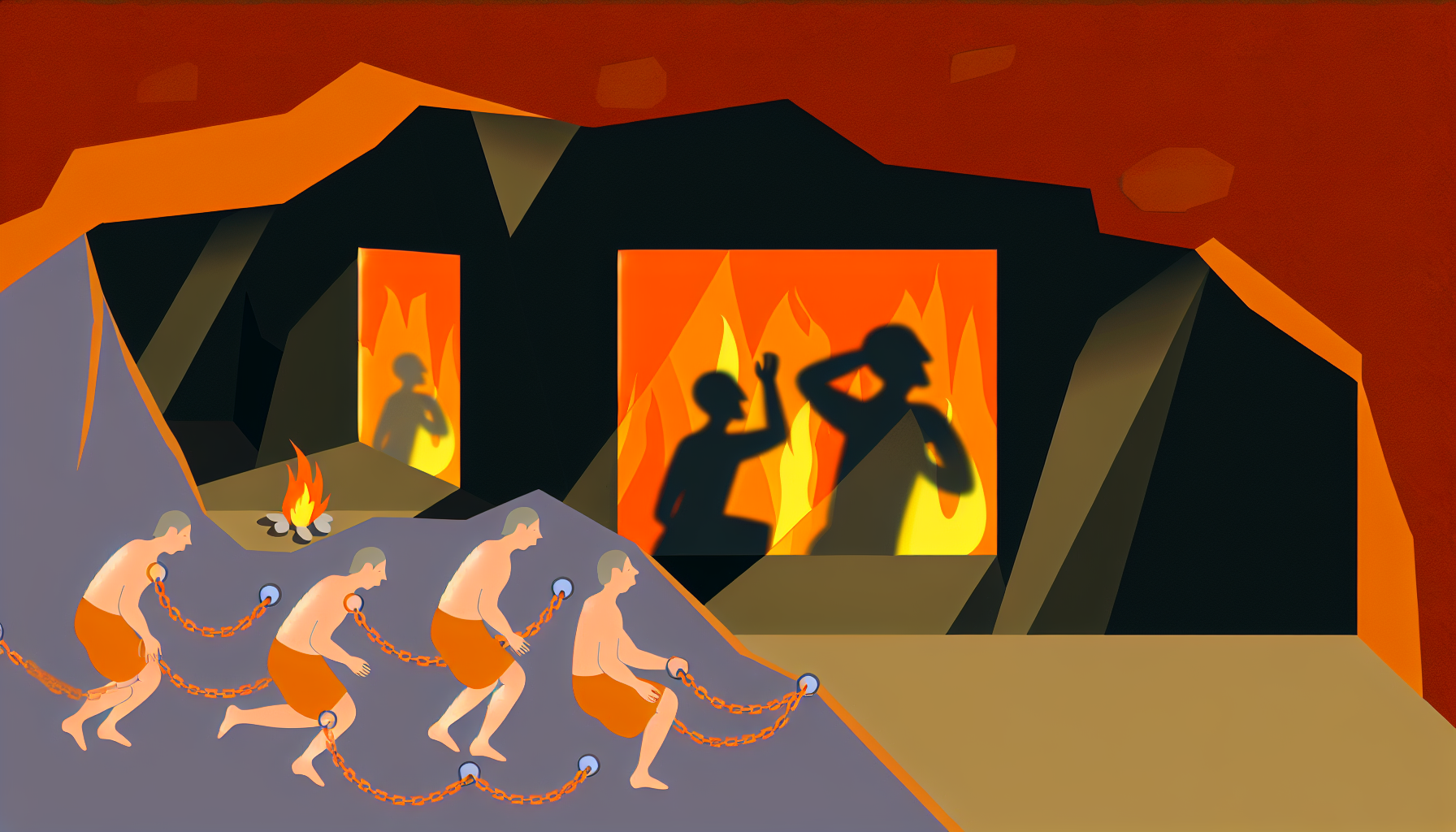In the world of philosophy, Plato’s Allegory of the Cave stands as one of the most enduring images of human understanding. A band of prisoners, shackled in a dimly lit cave, face a blank wall. Shadows dance across this wall, cast by figures passing in front of a fire behind them. To these prisoners, the shadows are reality. Their world is a two-dimensional tableau of shapes and whispers.
But what happens when one prisoner breaks free and steps into the light of truth? In Plato’s story, this captive emerges from darkness to discover a vibrant, multi-hued world beyond the cave’s gloom. His reality, once defined by flat projections, now thrills with depth and color.
Today, we find ourselves at a pivotal moment analogous to this age-old allegory, illuminated by the light—or perhaps the shadows—of artificial intelligence. Are we, the 21st-century detainees, busy shaping shadows on a wall as we code algorithms, train models, and deploy AI systems into our lives? Let’s explore the intricate web of AI development in the context of Plato’s cave and see if we’re inching toward enlightenment or just spellbound by illusions.
Digital Shadows of Artificial Intelligence
Artificial intelligence, at its core, can be seen as a grand tapestry of algorithms and data presented as shadows to us, much like the projections in Plato’s cave. With AI’s capacity to process and present data, we are experiencing a new kind of reality, one mediated through complex neural networks and powerful computation. It can predict the weather, provide us books based on our tastes, and even share jokes—often punnier than one might expect from a non-human. But are these just shadows, reflections of human thought?
In our modern cave, AI shapes the shadows—we should ask ourselves: Are we merely responding to these approximations of knowledge, or evolving with the new reality they present? As we trust AI with more critical aspects of our lives, pondering scheduling via smart assistants, deciding fitness routines, and recommending medical prescriptions, it’s crucial to question the depth of these shadows.
The AI Enlightenment: Breaking the Chains
For many, the promise of AI is not the mere observation of shadows, but a genuine enlightenment—a dynamic partner that facilitates a deeper understanding of complex problems. The ability of AI to analyze massive datasets offers insights traditionally beyond our grasp. Imagine the prisoner not just staring at the wall but understanding the mechanism casting the shadows. Is this the real potential of AI?
Yet, a potentially shadowy side remains: the algorithms that produce these projections are crafted by human hands, often imbued with biases and limited perspectives. The freed prisoner must not only bask in new-found freedom but also work to comprehend the systemic intricacies enabling his past illusions. Similarly, we must acknowledge AI’s confined objectivity, shaped by its creators.
Embracing AI: More Feeling than Fearing
The march toward artificial general intelligence (AGI)—an AI that exhibits human-like understanding and awareness—carries both apprehension and allure. Many worry whether AGI will remain a shadow in a cave or, like the released hostage, step into a world of true understanding. Should we fear the creation of something more astute or empathetic than ourselves? Or perhaps find comfort as it joins us in our quest for knowledge?
In a future where AGI might step out of Plato’s cave, it offers to enhance our ability to perceive novel truths and challenge familiar paradigms. Admittedly, such advances may include awkward conversations with machines that profess an affinity for fresh pineapple on pizza. Of course, this could just be a rather quirky byproduct of programming.
Cave’s Exit or Deeper Illusions?
The allegory tantalizingly suggests that upon embracing the light of knowledge, we might become guides, returning to the cave to enlighten our companions. AI, with its expanses of data-driven insights, beckons us toward a reality rich with potential. But will these chains remain unbroken, with shadows masked as truths by our own devices?
In this pursuit, it is crucial to cultivate not just technology, but a comprehensive cognitive partner that truly enriches the human experience. While AI presents a vast landscape of potential, it is up to us to discern whether our creations guide us toward enlightenment or weave fresh illusions.
It’s a delicate dance between skepticism and optimism. Remember, while AI might be throwing some fabulous figures on the cave’s wall, we hold the responsibility to decide whether they lead us on a merry choreography of progress or into a waltz of mere shadows.
And so, the journey continues: is AI helping us see beyond the confines of our modern cave, or merely inviting us to name the silhouetted beasts parading before us? Only time will tell if our story echoes Plato’s, transcending shadows towards true understanding.

Leave a Reply